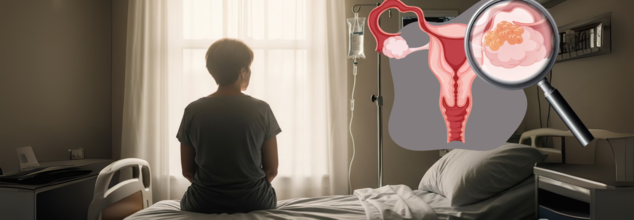- Health Conditions A-Z
- Health & Wellness
- Nutrition
- Fitness
- Health News
- Ayurveda
- Videos
- Medicine A-Z
- Parenting
- Web Stories
Menopause Age Plays A Significant Role In Our Future Heart Health - Can You Delay The Age?

(Credit-Canva)
Menopause brings big changes to a woman's body, however, many do not know how these changes affect their health. A Jan study published in the Circulation Research showed that when a woman goes through menopause could tell us a lot about her future heart health. A study published recently found that women who stopped having periods later in life generally had healthier blood vessels. They were also much less likely to suffer heart attacks and strokes after menopause, compared to those who went through it earlier.
Menopause And Heart Health
The researchers also noted that these women who had later menopause had better fat levels in their blood and fewer signs of "oxidative stress". This might help explain why their hearts seemed healthier.
Most women enter menopause between ages 45 and 55, with the average in the U.S. being 52. However, about 10% of women experience "late-onset" menopause, meaning it starts after age 55.
Late Menopause and Your Heart Disease Risk
For this study, researchers looked at 21 women who were still having periods and 71 women who had already gone through menopause. The postmenopausal group was then split based on whether their menopause started at a normal age or later.
To check their heart and blood vessel health, the researchers measured how well a main artery in the arm could widen. They also looked at the health of the mitochondria inside blood vessel cells, and checked levels of hormones, fats, and other substances in the blood.
As expected, all women who had gone through menopause had less healthy blood vessels compared to those still having periods. This is normal as estrogen levels drop and blood vessels tend to stiffen with age. Also, as we get older, these "power plants" in our cells can produce more harmful molecules called free radicals, leading to something called oxidative stress, which can cause diseases like heart disease.
However, the surprising finding was that women in the late-onset menopause group seemed to be somewhat protected from this age-related decline in blood vessel health.
Their blood vessel function was only 24% worse than the premenopausal group, while for those with normal-onset menopause, it was 51% worse. This better blood vessel function lasted for at least five years after menopause for the late-onset group. Women in the late-onset group also had better functioning "power plants" (meaning fewer harmful free radicals and less oxidative stress) and healthier fat levels in their blood.
Why Menopause Impacts Heart Health
Even though women with later menopause had relatively better heart health in the study, it's important to remember that all women face a higher risk of heart disease once they go through menopause.
Studies show that this is largely due to estrogen. According to the Oxidative medicine and cellular longevity journal, estrogen is known to protect against heart disease. Once a woman's estrogen levels drop during menopause, she starts to lose that protective effect. As a result, many women will see their blood pressure and cholesterol levels go up, even if their diet and activity levels don't change.
So, it makes sense that women who go through menopause later have better heart health. The longer your body produces estrogen, the more protection your heart gets. Blood vessels work better before menopause, meaning they are more resistant to damage and heart attacks the longer you stay out of menopause.
Protecting Your Heart During and After Menopause
While you usually can't control when you start menopause, you can still take steps to protect and maintain your heart health during and after this transition. This includes following the usual advice for a healthy lifestyle:
- Starting a healthy diet with more fruits and vegetables, and less meat and cheese.
- Monitor your cholesterol levels.
- Staying active is crucial, aim for at least 30 minutes of exercise most days of the week, including both cardio and strength training
- Getting enough sleep is also vital for heart health; however, this can be tough during menopause due to issues like insomnia and night sweats.
Never In The Mood Anymore? Your Gut Issues Could Be Lowering Your Sex Drive

Credits: Canva
It’s easy to blame low libido on stress, hormones, or simple fatigue but what if the actual perpetrator lurks deeper—literally? More and more, studies are indicating your gut health as a main player in affecting sexual desire.
The gut is no longer seen as merely a digestive system. It's today understood to be a command center for a broad range of body functions—immunity, hormone balance, and even emotional well-being. And all of them have a direct or indirect impact on libido.
At the core of this connection is the gut-brain axis, a two-way communication pathway linking your gastrointestinal system with your central nervous system. This process enables your gut microbiome to impact major brain chemicals such as serotonin and dopamine, both of which are important in mood, motivation, and arousal. This is the thing: roughly 90% of the body's serotonin is actually made in the gut. So when your gut is out of whack, your mood, energy, and sex drive can suffer.
What is Estrobolome?
One of the most interesting new finds is the estrobolome—a special group of gut bacteria that break down estrogen. The bacteria secrete an enzyme called β-glucuronidase, which recycles estrogen and keeps hormones in check.
When the estrobolome gets disturbed—perhaps by a bad diet, stress, or antibiotics—it can disrupt estrogen balance. What's the consequence? Mood swings, PMS, exhaustion, and a vanishing libido.
Why Your Gut Might Be Draining Your Energy?
Even when you're eating all the right foods, a gut that doesn't work well can interfere with your ability to take in necessary nutrients such as iron, vitamin B12, and magnesium—all of which play a central role in energy and mood management. Without sufficient supplies of these, you might feel perpetually drained and mentally cloudy. And let's face it—nobody feels sexy if they're not rested.
Add to that chronic inflammation and disrupted neurotransmitter production, and you’ve got a recipe for low libido that can’t be fixed by aphrodisiacs alone.
How Your Gut Affecting Your Sex Life?
If you're consistently experiencing bloating, constipation, or IBS-type symptoms and also experiencing poor sleep, mood swings, or irregular periods, your gut is likely playing a more significant role than you realize. These overlapping symptoms indicate that your digestive system might be playing with your hormones and mood—both integral components of a healthy sex drive.
Gut health is no silver bullet, but it is an oft-overlooked part of the libido equation. Though great gut health will not necessarily trigger an increase in sexual appetite, it provides the groundwork for enhanced mood, vitality, and emotional preparedness—all prime motivators of a healthy libido.
As psychologists and nutrition scientists frequently point out, sexual desire is seldom purely biological. It's impacted by emotional attachment, self-esteem, satisfaction with one's relationship, stress levels, and even cultural conditioning.
How to Reset Your Gut and Revive Your Libido?
It's not difficult to enhance gut health, but it does need to be a habitual practice. Following are practical, science-supported methods to get your gut—and your libido—going strong:
Nourish your gut flora: Consume more whole foods containing fiber such as leafy greens, lentils, and whole grains.
Include fermented foods: Yogurt, kefir, sauerkraut, and kimchi add good bacteria.
Exercise regularly: Activity supports diversity of gut flora and reduces inflammation.
Deal with stress: Ongoing stress can disrupt the gut-brain axis. Try breathwork or mindfulness.
Sleep: Inadequate sleep disturbs both gut and hormonal balance.
Hydrate: Water keeps the gut mucosal lining intact, facilitating absorption and immunity.
Stay away from unnecessary antibiotics: They destroy both bad and good bacteria.
Your gut may be doing more than break down your food. It may be quietly influencing your mood, your hormones—and yes, your sex life. Although low libido can have countless causes, focusing on your gut is one of the most compelling ways to support your overall health and rediscover your desire. If you've been feeling "off," begin by paying attention to your gut. It might be attempting to communicate more with you than you realize.
Pneumonic Plague Death Raises Alarm, Can Prairie Dogs Be The Cause Of It?

The sudden death of a Northern Arizona resident due to the pneumonic plague- a diseases that is the known cause of the century old health crisis bubonic plague, has raised alarm among the locals and health officials alike. The person died from the plague just 24 hours after feeling sick and showing symptoms. This is a rare but serious case of the disease in the United States amid the declining rate of immunization. The person, whose name hasn't been released, was taken to Flagstaff Medical Center in a very bad condition and passed away the same day.
The case has raised new worries, especially since it happened at the same time as many prairie dogs were reported dying near Flagstaff. This is a natural warning sign that the plague might be spreading among wild animals in the area.
What Is Pneumonic Plague?
Plague is a rare but serious illness that can affect both animals and humans. It's caused by a type of bacteria called Yersinia pestis (Y. pestis). These bacteria are found in wild rodents and their fleas in many parts of the world, including most of the western United States. Pneumonic Plague is a more concerning type because it affects the lungs. It happens when you breathe in the Y. pestis bacteria. This form of plague can be spread from person to person. Symptoms of pneumonic plague usually start one to four days after exposure. These include:
- Fever
- Headache
- Weakness
- A cough that produces bloody or watery mucus (due to lung infection, or pneumonia)
If you start showing symptoms, see a doctor right away. If you think you might have been intentionally exposed to pneumonic plague, contact law enforcement immediately. Currently, there's no vaccine for pneumonic plague. However, antibiotics can be used to prevent illness in people who have been exposed to the bacteria.
How Are Prairie Dogs Linked To This?
According to a report received by Coconino County Health and Human Services (CCHHS) on 7th July, Townsend Winona area experienced a prairie dog die-off. They explained that a sudden die-off of prairie dogs and other rodents can be a warning sign for plague, a serious disease that can affect both animals and people. The bacteria that cause plague, Yersinia pestis, spread through the bite of infected fleas or by touching sick animals. People can also get infected from sick pets.
Can The Plague Be Prevented?
The affected area is on private land, CCHHS is working with the property owner to collect fleas for testing. They'll also contact other nearby property owners to expand their checks and potentially treat the area. Rodent burrows will be treated to reduce flea activity, and the area will continue to be watched closely because plague is common in Coconino County, CCHHS has a system to monitor for the disease. They also watch for other diseases like West Nile virus and rabies to quickly find them, understand how they spread, and take steps to protect the public. Here are some preventative tips you should have
Protect your pets from fleas
Use veterinarian-approved flea treatments, keep your pets on a leash, and keep them away from areas where wild rodents live.
Report dead rodents
If you see many dead rodents or rabbits, please call animal services
Keep rodents away from your home
Clear away brush, rock piles, trash, and lumber from around your house and sheds. Store food in containers that rodents can't get into.
Avoid wild animals
Never feed or touch wild rodents, and stay away from areas where they are known to live. Do not touch sick or dead animals.
Prevent flea bites
Use insect repellent with 20-30% DEET and tuck your pant legs into your socks.
Keep dogs on leash
This prevents them from roaming around rodent burrows and is also required by Arizona State law.
Be careful when camping
Don't camp near rodent burrows and avoid sleeping directly on the ground.
Be aware of sick cats
Cats can easily get plague. If your cat is sick (especially if it roams outside), take it to a vet right away for diagnosis and treatment to reduce the risk of people getting plague.
Get vet care for sick pets
If your pet shows symptoms like a high fever, swollen lymph nodes, tiredness, loss of appetite, a cough, or eye discharge, contact a veterinarian immediately.
'I Thought It Was Something I Ate', Woman Got Diagnosed With Stage 4 Ovarian Cancer After A Routine Ultrasound Revealed Terminal Illness

Credits: Health and me
A 57-year-old schoolteacher from Kolkata, Ruma Sen* had spent decades standing in front of classrooms, guiding young minds with poise and patience. But when her own body began to send quiet warnings—persistent bloating, fatigue that lingered, clothes fitting tighter than usual—she brushed it off. “I just assumed it was something I ate or part of aging,” she recalls. Yet, deep down, a quiet concern stirred. And then came the ultrasound that changed everything.
A mass on her left ovary. Fluid accumulating in her abdomen. The CT scan and biopsy confirmed what no one wants to hear: Stage IV high-grade serous ovarian cancer, with metastases to her intestines and abdominal lining.
“I felt like the floor had vanished beneath my feet,” Ruma says. “In that moment, the future I imagined just disappeared.”
“Ovarian cancer often whispers until it roars,” explained Dr. Debapriya Mondal, Ruma’s medical oncologist at Apollo Cancer Centre, Kolkata. “By the time it's diagnosed, it's usually advanced. But even Stage IV isn't without hope.”
This late-stage diagnosis is common with ovarian cancer, especially its most aggressive subtype—high-grade serous carcinoma. It lacks early symptoms that are easily distinguishable from benign issues like indigestion or menstrual irregularities. That’s why it’s dubbed the “silent killer.”
Round One: Chemotherapy as the First Line of Defense
Chemotherapy began within days of diagnosis. The plan was clear: shrink the tumors to make surgery safer and more effective. The process, however, was anything but clinical for Ruma.
“The first cycle made me violently nauseous. My hair fell out in clumps. I was too weak to stand some mornings,” she remembers. Despite the toll, the treatment was working. By the third cycle, imaging showed significant tumor shrinkage.
“Chemotherapy is brutal,” Dr. Mondal admits. “But when the scans show tumors shrinking, it’s our signal that we’re fighting back—and winning ground.”
Round Two: A Critical Turning Point Surgery
Ruma’s next hurdle was interval debulking surgery, a complex procedure to remove all visible tumors, followed by HIPEC (Hyperthermic Intraperitoneal Chemotherapy)—a method where heated chemotherapy is delivered directly into the abdominal cavity during surgery.
“It was the toughest part,” Ruma says. “I woke up in ICU with tubes everywhere. My abdomen felt like it was on fire.” Recovery was grueling. Ten days in the hospital marked by small but vital victories: sipping water, standing unaided, breathing without assistance.
“HIPEC is not for every patient,” Dr. Mondal says. “But in selected cases like Ruma’s, it increases the chances of a long remission or even a cure.”
Round Three: Genetic Testing and Personalized Medicine
As Ruma regained strength, her care team ordered homologous recombination deficiency (HRD) testing, a genomic analysis that helps determine how well a tumor repairs its DNA. The results revealed a germline BRCA1 mutation, a known genetic driver of ovarian cancer.
“This changed everything,” Dr. Mondal explains. “When tumors carry this mutation, we can use targeted maintenance therapy, such as PARP inhibitors, which drastically reduce the risk of recurrence.”
For Ruma, the discovery was both empowering and alarming. “I now had a new weapon against my cancer. But I also worried about what it meant for my daughters.”
She completed three more cycles of chemotherapy and transitioned to oral PARP inhibitors—medications designed to exploit her cancer’s genetic vulnerabilities. For the next two years, she remained under strict oncologic surveillance, with regular scans and bloodwork to track any signs of recurrence.
Ruma’s diagnosis didn’t just change her life—it changed her family’s trajectory.
Her two daughters, Megha** and Ananya**, underwent genetic counseling and testing. Megha, the elder at 35, tested positive for the same BRCA1 mutation. “It was a gut punch,” Megha says. “But I felt lucky to know.”
After consulting with specialists, she opted for risk-reducing salpingo-oophorectomy (RRSO)—a preventive surgery to remove her ovaries and fallopian tubes. “It meant early menopause. But it also meant I was taking control of my future,” Megha explains.
According to Dr. Mondal, this kind of cascade testing—where family members of patients with genetic mutations are screened—is vital. “We now have tools not just to treat cancer, but to prevent it. Megha’s decision may have significantly lowered her lifetime risk of ovarian and breast cancer.”
Today, Ruma is in clinical remission. She has resumed teaching, started leading yoga sessions for cancer survivors, and advocates for genetic testing and early detection. “I used to fear my body,” she admits. “Now I listen to it. I take care of it.”
She also speaks publicly about her cancer journey, helping dismantle the stigma and fear surrounding a disease that affects nearly 300,000 women worldwide each year, according to the World Health Organization.
“We are in a new era of precision oncology,” Dr. Mondal emphasizes. “We are no longer limited to one-size-fits-all treatments. Every tumor has a story written in its DNA—and we’re learning how to read it.”
Why It Is Important To Listen to Your Body?
Ruma’s story is more than a personal victory. It’s a real-world example of how modern oncology is evolving—from late diagnosis to targeted intervention, from suffering in silence to survivorship with purpose. Here’s what it tells us:
- Listen to your body, even when the symptoms seem minor.
- Early diagnosis remains rare, but genetic insights can improve long-term outcomes.
- Precision medicine—like HRD testing and PARP inhibitors—is rewriting how we approach advanced cancer.
- Genetic counseling empowers entire families, not just patients.
- And most importantly, survival is possible, even in Stage IV.
“I don’t know what the future holds,” Ruma says. “But I know I’ve done everything in my power to live it fully.”
Disclaimer: This article is based on a real-life medical journey. To protect the privacy of the individual and her family, names and identifying details have been changed. Medical information shared is for educational and awareness purposes only and should not be considered a substitute for professional medical advice, diagnosis, or treatment.
© 2024 Bennett, Coleman & Company Limited

